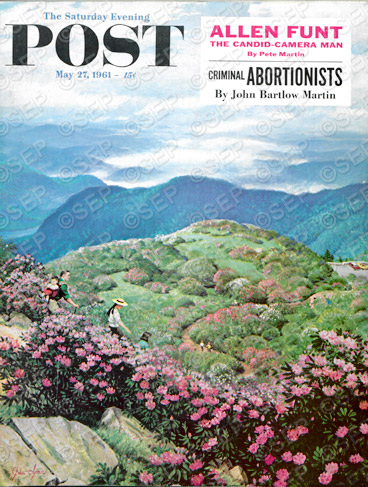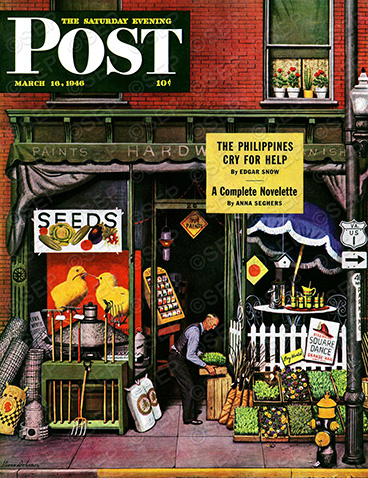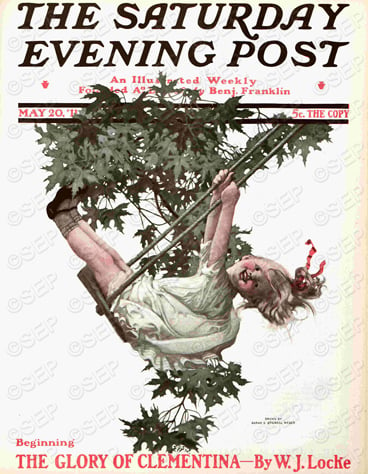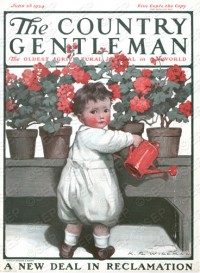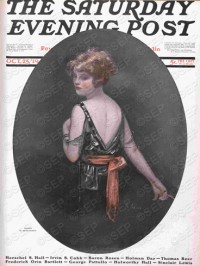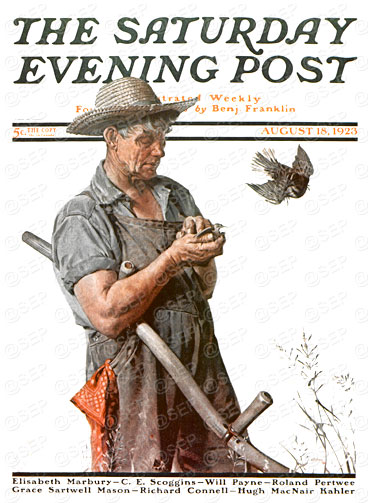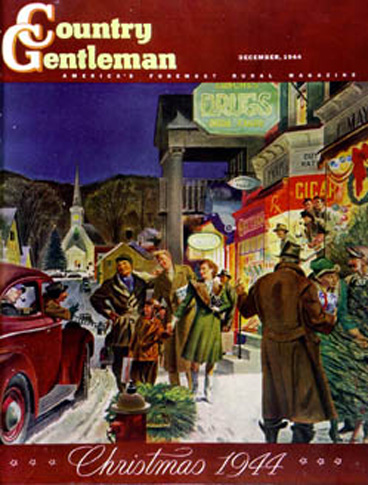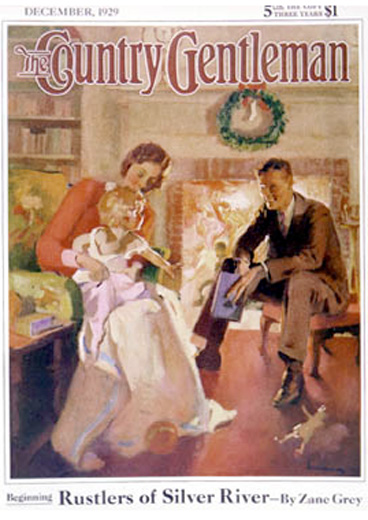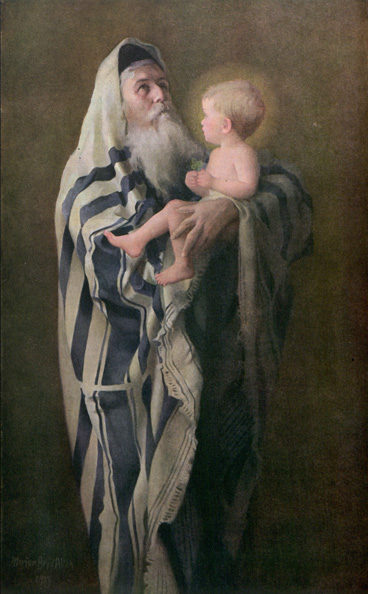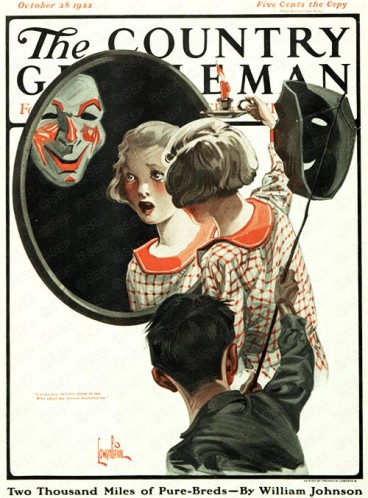A Century of Fried Chicken
Decades of options for fried chicken from 1884 to 1982 — which one will you try?
—

1880s: ‘Scorch Off Hair’
Pick and clean, scorch off hair, wash, and cut up. Rub each piece with salt and sift a little pepper over. If very young, it may be put in the skillet and fried at once. Otherwise turn a small teacupful of water over, cover tight, and boil 20 minutes. When the water has dried out, put in a heaping spoonful of fried meat gravy, set the skillet on the top of stove, and fry till brown.
If gravy is desired, mix one egg with a dessertspoonful of flour and a cupful of milk — first making the flour smooth as for starch — and pour over the chicken when done, setting the pan in the oven long enough to cook the egg. —“Bill of Fare for Winter,” The Country Gentleman, January 17, 1884
1890s: ‘Have Your Pan Ready with Boiling Lard’
Take small spring chickens — large chickens will not be satisfactory — separate the joints, dip them each in egg, then in corn meal or white meal. Meanwhile, have your pan ready with boiling lard, and never put in additional lard while cooking the chicken. Lay as many pieces of chicken in the pan as will lie comfortably without squeezing. Fry a light brown, first on one side, then on the other; have a hot dish in which to put the chicken — keep hot. Make the sauce with the remains of the frying by putting a little cream, pepper and salt, and mixing nicely; throw in a little chopped parsley and pour the sauce around the chicken.
—“Useful Receipts,” The Saturday Evening Post, January 7, 1893
1910s: Pair with Baking Powder Biscuits

Salt the pieces and roll them in flour. Have the skillet hot, with plenty of lard at smoking heat. Allow the chicken to brown quickly on all sides. Then reduce the heat, add a little water from time to time and cook until very tender — an hour is not too long for a good-sized bird. When done make a rich cream gravy. Baking-powder biscuits are the best accompaniment for this dish.
—“Excellent Ways of Cooking Chicken” by Elizabeth L. Gilbert, The Country Gentleman, June 29, 1912
 1920s: A Wealth of Butter
1920s: A Wealth of Butter
We dress the chickens to be fried here the day before and leave them on ice. The next day we cut them up, saving out the giblets and bony pieces to make a stew for the next meal. If we are opulent in butter, which is usually the case here, we salt and lightly pepper the nice pieces, dust them in flour, and place them to fry in a skillet of hot fat or butter. We do this quickly, turning the pieces until they are golden brown.
—“Good Things to Eat” by Corra Harris, The Country Gentleman, October 1, 1928
1930s Faux Fry
Who doesn’t like fried chicken — if it is tender, juicy, and easy to eat? While the method of cooking to be described is not true frying, it offers simpler cooking and meat that has every appearance of fried chicken. Many eating places famous for their fried chicken use this method of preparing it.
Cut up the chicken into serving pieces, two halves for small chickens and quarters for larger sizes, or as for fricassee — 4 to 8 servings — for the largest bird.
If the bird is to be halved or quartered, first break the major joints. This makes for easier eating, more uniform and more satisfactory cooking. The pieces are flattened and stay flattened during the cooking.
Working from the inside, snap the two joints in the wings and the legs. This technique severs the cartilaginous tissue in those joints. One of these joints is the one which attaches the wing and legs to the body. The second joint in the leg attaches the thigh to the drumstick. In the wing, the second joint to be severed attaches the upper part of the wing to the second joint.
 For each 1 1/2 pounds of bird, use 1/3 cup of flour, 1/2 teaspoon of salt, and dash of pepper, if desired, and rub thoroughly into the surface of each piece. This coating is important to absorb surface moisture which keeps the meat juicy and avoids disagreeable spattering in frying. The pieces are then ready for frying, although many people prefer to have it dipped into beaten egg and crumbs after the flour coating.
For each 1 1/2 pounds of bird, use 1/3 cup of flour, 1/2 teaspoon of salt, and dash of pepper, if desired, and rub thoroughly into the surface of each piece. This coating is important to absorb surface moisture which keeps the meat juicy and avoids disagreeable spattering in frying. The pieces are then ready for frying, although many people prefer to have it dipped into beaten egg and crumbs after the flour coating.
Start cooking in fairly hot fat deep enough — about 3/4 to 1 inch layer — so that the pieces need to be turned only once to give a nice browning on outside. In frying, the larger pieces should be fried first, and better results come if the pieces are not crowded in the pan both in the frying and oven cooking. Transfer to covered casserole or roasting pan and cook in a slow to moderate oven, 300 to 350°F, from 1/2 to 1 1/2 hours depending upon the size.
The browning process may be done several hours, or even a day, in advance of the baking and serving time. It has the advantage of removing every trace of frying near or at mealtime. If the flavor of butter is desired, brush the surface with melted butter just before serving. Gravy may be made from the fat drippings left from the baking pan, adding more from the frying pan, if necessary.
—“Savory Surprises with Spring Chickens” by Kathryn Bele Niles, The Country Gentleman, May 1, 1938
1930s French Fry
French-frying chicken is a full-time job, but with a thermometer clipped to the side of the kettle of deep fat you can be surer of temperatures. First step in this kind of frying is to quarter or halve the chicken. Then dip in thin batter or in egg and crumbs. The batter makes a smoother coating, less likely to slip off and be left behind in the frying kettle. A mixture of one egg beaten up with three quarters of a cup of milk, one cup of flour on the scant side, and a teaspoon of salt is a good cover batter for chicken.
 When you are ready to dip and slide the chicken in gently, have the kettle of deep fat heated to about 350° F. Again “hot but not smoking” is the word for it.
When you are ready to dip and slide the chicken in gently, have the kettle of deep fat heated to about 350° F. Again “hot but not smoking” is the word for it.
The moisture in the chicken makes the hot fat bubble and boil. So leave a safe margin at the top of the kettle and have a care for your own skin. A pair of kitchen tongs may prevent a burn on the hand, and they are easy on the chicken. With tongs, you can turn and lift each piece without piercing the brown crust and letting out juice.
Chicken completely immersed in deep, hot fat fries quickly. Started at 350°F, quarters of medium-sized young chicken are usually done in 10 to 15 minutes if you keep the temperature of the fat between 300 and 325°F.
That’s why restaurants feature this kind of fried chicken in their cooked-to-order service. But if more convenient, it can be finished slowly in the oven. I find it best, though, when it moves out of the frying kettle onto the plate with only a brief pause on thick absorbent paper to drain and get a sprinkling of salt and pepper.
—“Chicken — The American Way” by Ruth Van Deman, The Country Gentleman, July 1, 1939
1940s Crispy Coating
Roll pieces of young chicken in seasoned flour. Fry in deep hot fat (350°F) until brown, turning frequently. Finish cooking in covered pan in slow oven (325° F) — about 25 minutes. Spread out chicken and uncover for last 10 minutes’ baking for that crispy coating!
—“Six Things to Be Thankful For” Continental Can Company advertisement, The Saturday Evening Post, November 11, 1941

1940s Herb Mix
It’s something of an adventure to delve into the secrets of herbs and spices and flavorings. The artistry of cooking becomes a reality. Monotony of flavor is exchanged for tangy piquancy. So, in an experimental mood, let’s serve up some highly appetizing dishes, herb-seasoned to taste. You’ll want to try … a good quarter of a teaspoon of ground mace, nutmeg, or ground ginger to your country-fried chicken.
—“Seasoned to Taste,” The Country Gentleman, April 1, 1946

A Hint from Heloise
Nothing is printed in her column unless Heloise has tried it and knows that it works. In Hawaii, she hired neighbors to come and help with the testing. Once they fried chicken 50 different ways in every kind of utensil on the market. (They decided you can’t beat an old cast-iron pot with a few drops of yellow food coloring added to the shortening ‘for a golden crust that looks like an artist painted it.’)
—“Dishrags to Riches: The Saga of Heloise” by Maxine Cheshire, The Saturday Evening Post, March 2, 1963
1940s Southern-Fried Chicken
The chicken fried in the Midwest is usually a large semi-adult bird, little short of the classification of hen. The Southern fried chicken is a barnyard subdeb, rarely more than 10 to 12 weeks old and weighing from a pound and a half to two pounds. Midwestern housewives moving to the South and buying frying-sized chickens at Southern markets are usually afraid they have been sold quail. That the younger, tenderer bird is the better suited for frying would seem to be unanswerable. Yet bad cooks have made it of ill repute with too much grease and weird coatings of batter. Actually, it requires merely a rolling in flour or a mixture of flour and meal, and frying in an adequate amount of hot fat. A suitable recipe for fried chicken may be had as follows:
- 1/2–2-pound fryer cut into pieces for frying
- 1–1 1/2 teaspoons salt
- 1/2 teaspoon pepper
- 1 cup flour
- 6–8 tablespoons bacon drippings or cooking fats or oil
Wash pieces of chicken well. Salt and pepper and roll each piece in flour, coating well — this will give the chicken the brown crust. Heat fat in skillet, add chicken, but do not place pieces on top of each other. Place lid on skillet so that steam will escape — this will prevent the outer crust from getting soggy. Sauté underside 15 minutes on medium heat until a golden brown. Then turn and brown the other side 15 minutes longer. Remove chicken from skillet when very tender and place on brown paper to absorb excess fat.
A two-and-a-half-pound chicken should be cooked 20 minutes on each side.
—“What’s Wrong with Southern Cooking?” by Ralph McGill, The Saturday Evening Post, March 26, 1949
1950s Dad’s Favorite
Because he’s “a great guy,” the three Myers boys help cook dad’s favorite foods for this special Father’s Day dinner.
Different Fried Chicken
- 2 (3- to four-pound) fryers
- 4 cups tomato juice
- 1/4 cup chopped green pepper
- 1 or 2 garlic cloves
- 1 teaspoon dry mustard
- 1 teaspoon salt
- fat for frying
 Batter:
Batter:
- 1 1/2 cups sifted flour
- 1 teaspoon salt
- 1 1/4 cups strained, seasoned tomato juice (from above sauce)
- 1 egg beaten
- Cut fryers into serving pieces.
- Combine tomato juice, green pepper, garlic, and seasonings in a large saucepan, and bring to a boil. Add chicken, cover pan, and cook over moderate heat 20 minutes.
- Heat fat for frying to 350°F.
- Make batter by combining flour and salt. Add tomato juice and mix until smooth. Add beaten egg and mix lightly.
- Remove chicken from sauce, drain, and dip pieces in batter. Fry in deep fat for 8 to 10 minutes, or until nicely browned. Drain on absorbent paper.
—“Dad’s Favorite Dishes” by Sara Hervey, The Country Gentleman, June 1, 1953

The Saturday Evening Post
December 12, 1959
1970s Shaker-Fried Chicken
- 2 spring chickens, quartered (broilers, fryers, 2 1/2 pounds each)
- 3 tablespoons soft butter
- 1 tablespoon fresh minced parsley
- 1 teaspoon minced fresh marjoram or 1/4 teaspoon dried marjoram
- 1/4 cup flour
- Salt and pepper
- 2 tablespoons butter
- 2 tablespoons lard
- 1 cup light cream
Select chickens weighing 2 1/2 pounds or a little over; smaller ones lack flavor and cook up waxy. Wash well and quarter. Rub thoroughly with soft butter and sprinkle generously with parsley and marjoram. Let stand for 1 hour at room temperature. Then roll in flour to which salt and pepper have been added. Melt the butter and lard in a heavy skillet and brown the chicken on all sides. Pour cream over it and let simmer, covered, for 20 minutes. Serves 6.
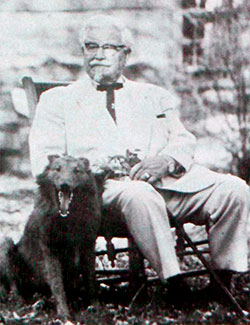
Fast-Fried from Colonel Sanders
In 1977, the Kentucky Fried Chicken mogul let us in on his secret for fast fried chicken — but he kept the 11 herbs and spices to himself:
“They say you can’t cook chicken in seven minutes, that it doesn’t get done, doesn’t get hot enough. They’ve got all these charts about the temperature and the time. I don’t know a damn thing about those charts, but I do know when the kitchen used to get to 120 degrees it was too damn hot for me to fry chicken.”
“Now, chicken is like a vegetable. It’s fresh and it’s delicate and it doesn’t like to sit around too long in a fryin’ pan. Still, it’s got to get hot enough to cook. Which means it takes too much time, destroys the delicate flavor. And, too, I don’t like the idea of keeping people waiting — you know, there’re other things to do — so along about 1939, after I’d tried everything else, I started preparing chicken in a special pressure cooker. The chicken fried quickly, it didn’t use a lot of oil, and it didn’t dry out inside because of the short cooking time which sealed in the natural goodness. I worked up the herbs and spices to bring out the flavor of the chicken — it’s the same formula they use in all 5,000 Kentucky Fried Chicken shops all over the world, and nobody’s improved on it yet.”
—“How to Make a Million After You’re 65” by Colonel Harland Sanders, The Saturday Evening Post, March 1977 and “The Man in the White Flannel Suit” by Starkey Flythe Jr., The Country Gentleman, December 1977
—“Shakertown: A Spirit Restored” by Linda C. Daniell, The Country Gentleman, September 1, 1977
1980s Low-Cal Crispy Baked Chicken
This chicken has the crispness and taste of fried chicken without the calories or cholesterol.
- 1 (2 1/2- to 3-pound) broiler/fryer, cut up
- 3/4 cup ground oat flour
- 1/2 cup corn meal
- 1/2 cup unprocessed wheat bran
- 1/2 cup raw wheat germ
- 1/2 teaspoon garlic powder
- 1/2 teaspoon onion powder
- 1/2 teaspoon sage
- 1/2 teaspoon thyme
- 1/2 teaspoon paprika
- 1/2 cup milk
- 1 egg
- 1/4 cup safflower oil, preferably cold-pressed
In plastic bag, combine all dry ingredients. In shallow bowl, combine milk and egg. Dip chicken, one piece at a time, into plastic bag to coat thoroughly. Dip into milk/egg mixture; coat again with dry mixture. Place in large shallow baking pan; drizzle oil over chicken. Bake at 400°F for 45 to 50 minutes or until tender and golden brown. Serves 4.
Tip: This coating mixture can also be used for fish.
—“Eat Your Way to Better Health” by Michele Gutter, The Saturday Evening Post, January/February 1980
1980s Crispy Fried Chicken for the Summer Picnic
 This recipe gives you what you really should want — chicken that is “fried to the bone.”
This recipe gives you what you really should want — chicken that is “fried to the bone.”
- 2 cut-up frying chickens (about 3 pounds each)
- 1 cup flour
- Salt and pepper to taste
- Paprika
- Dash of garlic powder
- 1 stick (1/2 cup) melted butter plus
- vegetable oil to equal the depth of 1 inch in frying pan or electric skillet
- Wash chickens and dry carefully in paper towels to remove excess moisture. Cut away excess fat.
- Pour flour in a paper bag and drop chicken pieces, a couple at a time, into the bag and shake until chicken is well coated.
- Season chicken liberally with salt, pep- per and paprika, and add a dash of garlic powder.
- Heat oil and butter over moderate heat (350–375°F). Fry chicken pieces, uncovered, half a chicken at a time. Do not crowd the skillet.
- Fry chicken about 30 minutes on each side, turning once, until golden brown. Lay chicken pieces on paper toweling to drain. Serves 8.
—“Man the Menu” by Jane E. Lasky and Janice Wald Henderson, The Country Gentleman, June 1, 1982
Hundred-Year-Old Recipes for Cold Winter Days
Back in 1917, The Country Gentleman — a sister publication of the Post — paired two warm winter meals with a frozen pineapple pudding. The dessert chef promises “although it is rich and takes some time for its concoction, it pays!” But if frozen treats sound like a bad follow-up to a warm winter meal, don’t worry. The editors also threw in a hot option for dessert: a yummy squash pie.
Recipes to Use on Cold Winter Days
Originally published in The Country Gentleman, January 6, 1917
Perfection Halibut
- 3 pounds halibut, thick slice
- 4 or 5 slices of onion
- ½ bay leaf
- 4 or 5 thin slices of salt pork
- cracker crumbs
- minced parsley, for garnish
For sauce
- butter
- flour
- milk or cream
- salt, pepper, cayenne
Put the fish in a baking pan with two or three tablespoonfuls of water. Put the pork, and the onion chopped fine, the half bay leaf, and a few cracker crumbs on the fish. Bake for three-quarters of an hour.
Make a white sauce of one heaping tablespoon of butter and the same amount of flour melted together, and one large cupful of hot milk or cream; stir until it bubbles, season with salt, pepper, and a bit of cayenne.
After the fish is cooked, push the flavorings off into the pan. Put the fish on a hot platter. Add one hot cupful of water to the contents of the pan, stir all together and let boil up; strain into the white sauce and pour round the fish. Sprinkle finely with minced parsley all over.
Meat Loaf
- 2 pounds of lean beef
- ½ pound of pork
- 1 tablespoonful of chopped parsley
- ½ cupful of bread crumbs
- ½ cupful of strained tomato
- 2 teaspoonfuls of salt
- ½ teaspoonful of onion
- ½ teaspoonful of pepper
- butter
- tomato sauce
Grind the meat very fine. Add the other ingredients and press into a firm roll. Bake 30 minutes. Have a hot oven to sear the surface, then cook more slowly. Baste with a liquid of one tablespoonful butter and half a cupful of hot water. Serve with tomato sauce.
Squash Pie
- 1 ½ cupfuls of squash, steamed or boiled soft
- 1 pint of milk
- 1 cupful of sugar
- 2 egg yolks
- grated rind of half a lemon
- 2 level tablespoonfuls of cornstarch, moistened with milk
- 1 cupful of shredded coconut
This recipe is sufficient for two pies. The crusts should be baked separately, first pricking them with a fork to prevent puffing. Mash the squash smooth; add the milk, hot; stir in the sugar, grated lemon rind, cornstarch and yolks of eggs, and boil 4 minutes, stirring slowly. When nearly cool, fill the baked crusts and sprinkle with shredded coconut.
A Family Favorite: Mrs. Wood’s Frozen Pudding
- 2 cupfuls of sugar
- 1 cupful of chopped pineapple
- 1 cupful of Sultana raisins or mixed candied fruit, chopped
- 1 pint of cream, whipped
- 1 pint of milk
- yolks of 8 eggs
Mix all but the fruit, and freeze [i.e., chill]; then open and stir the fruit in carefully; let it stand an hour, and then pack in molds if wished. This rule makes enough for a 2-quart freezer. The whites of the eggs may be used in angel cake; or use half the number of whole eggs, made with the milk and sugar into a custard.
I have used this recipe for frozen pudding ever since it was given to me by a notable housekeeper when I was just beginning to keep house. I serve it on most company occasions and for family festivities. Although it is rich and takes some time for its concoction, it pays! —Florence Spring

Art Gallery: Holiday Glamour
This holiday season, we bring you 33 portraits of women from the pages of the Post, from 1920s beauties to 1950s fashion plates, all wishing you season’s greetings and winter cheer!

George Hughes
December 10, 1960
Sneaking away while the house is asleep, this couple stashes away their Christmas gifts.
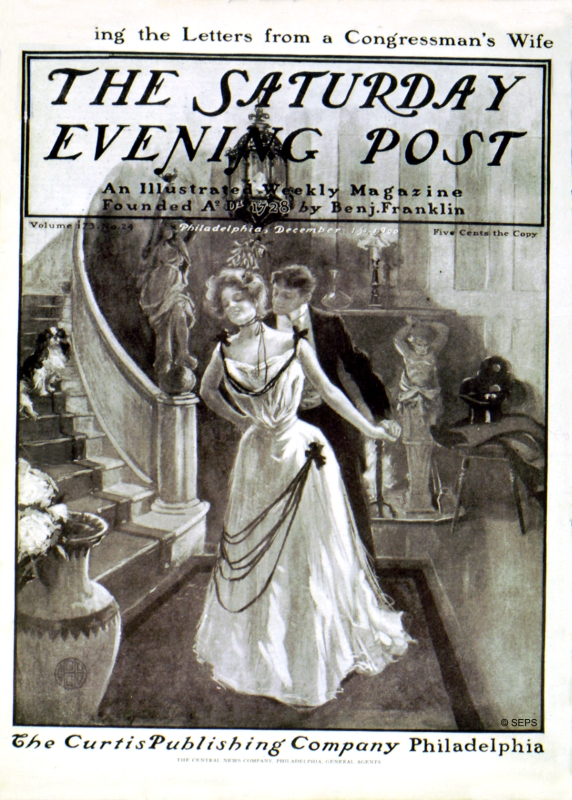
December 15, 1900
Lavish parties and formal garb say sophistication, but this couple whisks each other away to steal a kiss under the mistletoe.

J.J. Gould & Guernsey Moore
December 6, 1902
The warm candlelight from the tree makes this Christmas beauty radiant.

J.C. Leyendecker
December 21, 1918
They may be celebrating the holidays miles apart, he’s still the focal point of her celebration.

Harrison Fisher
December 12, 1908
This woman hopes for kisses from Christmases future.

Neysa McMein
December 13,1919
Arms overflowing with parcels and holly, she can’t remember if she bought the pipes for Grandpa Joe.

Charles A. MacLellan
December 13, 1924
This merry maid has boughs of holly to spare.
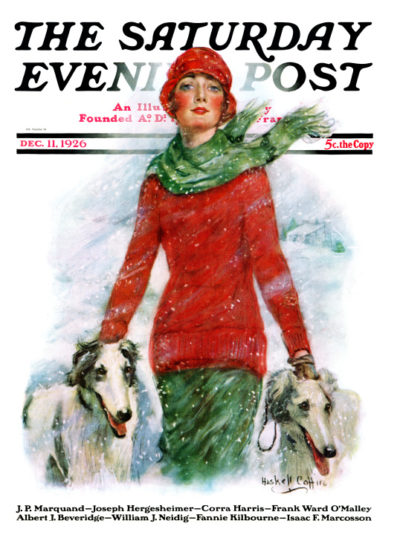
William Haskell Coffin
December 11, 1926
Cheeks chilled to rosy red, there is no better way to enjoy the snow than a stroll with your two best friends.

E.M. Jackson
January 5, 1929
This festive flapper is cozy indoors while the snow piles up outside.
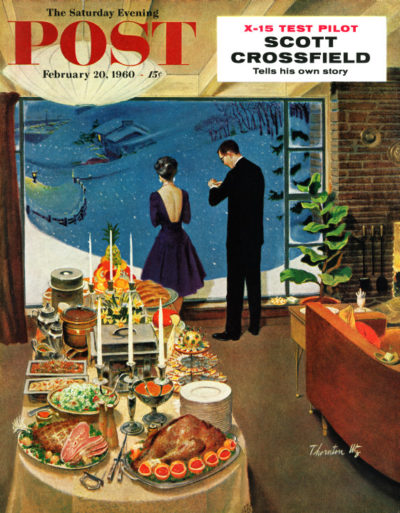
Thornton Utz
February 20, 1960
This hostess awaits her guests on a wintry evening.

Manning de Villeneuve Lee
December 1, 1937
Late nights in the winter are perfect for ice-skating…and maybe something more.

Harrison Fisher
December 14, 1912
This elegant lady puts the finishing touches on the mistletoe.

Henry Hutt
December 20, 1902
There’s no better way to get into the holiday spirit than hanging garland with the one you love.

Paul Nonnast
December 01, 1954 (Country Gentleman)
There is no time like the holidays for romance.
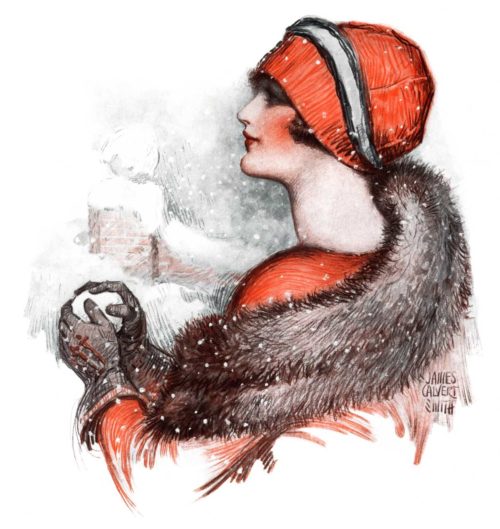
James Calvert Smith
January 17, 1925
This holiday lady is eyeing the next victim of a playful pelting.

William Hurd Lawrence
December 22, 1906
For some, snuggling up next to hearth and enjoying the solitude is a far better way to spend the holidays.

Al Parker
February 03, 1945
With a microphone and her sultry voice, she performs a stunning rendition of “Christmas Time.”
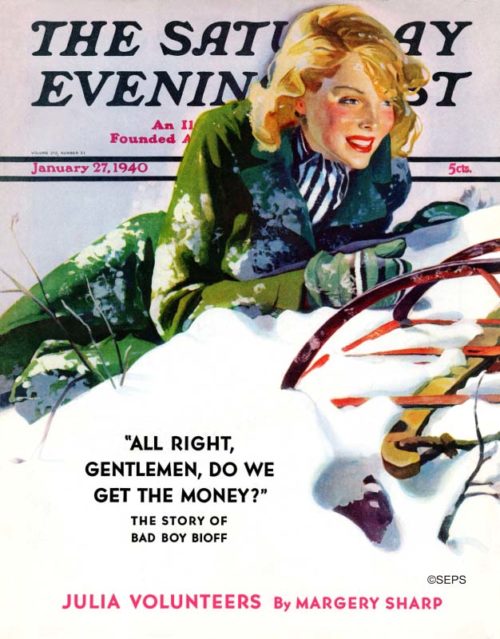
Dominice Cammerota
January 27, 1940
Who said kids get to have all the fun?

Ernest Chiriaka
February 06, 1954
She’s almost late to her own party!

Robert Meyers
April 20, 1957
Holiday romance takes the chill out of the coldest nights.

Joe deMers
March 31, 1956
A quiet moment before the whirlwind.
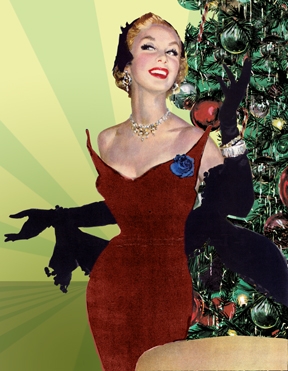
Joe deMers
August 05, 1950
She recounts her encounter with her admirer at the park.

R.G. Harris
May 12, 1951
When he asked his best friend to join him for dinner he never expected to be the third wheel on his own date.

Henry Hutt
December 30, 1905
With fresh snow covering the ground, sleigh rides make the perfect escape from the festivities.

Coby Whitmore
May 07, 1960
Poinsettia pinned and hair curled, this winter wonder catches the eye of all the guys.

Sarah Stilwell-Weber
March 03, 1917
This winter-clad socialite prepares to thrash any who threaten her fashion.

Emery Clarke
March 02, 1940
She sails with grace across the ice.

Coby Whitmore
October 24, 1959
Out of all of the gifts she received, her favorite was the rose.
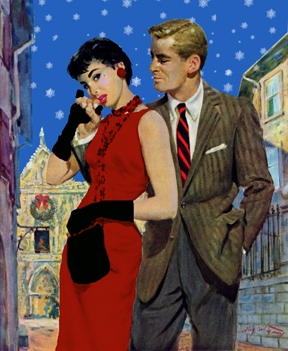
Coby Whitmore
August 20, 1955
The best way to enjoy a fresh snowfall is with someone who can hold you close.
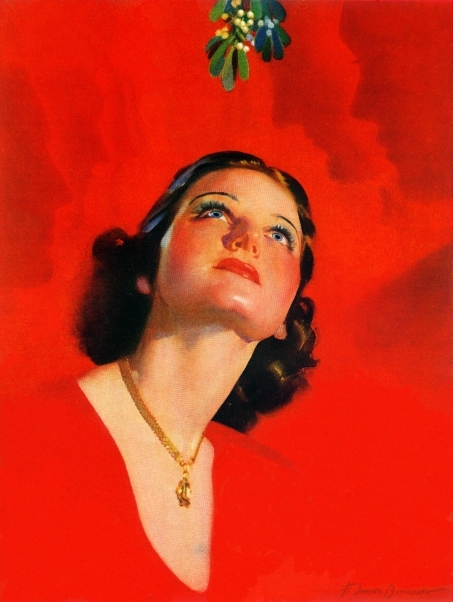
F. Sands Brunner
December 01, 1938 (Country Gentleman)
Waiting for someone under the mistletoe.

Joe deMers
April 15, 1950
She coaxes him over for a midnight dance.

Bob Hilbert
February 21, 1953
The letter in her hand doesn’t stave off this mistletoe kiss.
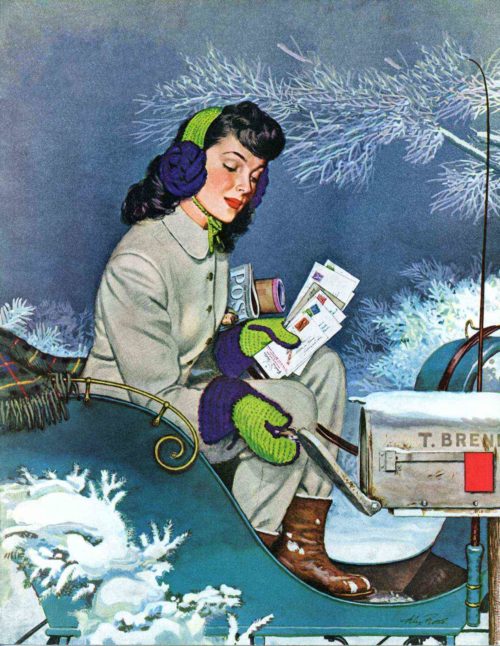
Alex Ross
January 29, 1944
This postwoman is delivering season’s greetings in spite of the snowfall.
Remembering Jeannette Rankin—the First Woman in Congress
One hundred years ago, Jeannette Rankin’s home state of Montana voted to send her to Washington, making her the first female member of Congress.
She had long been an advocate for women’s rights, but she was also gaining a national reputation for being, as this Country Gentleman item notes, “a Pacifist with a capital P.”
Pacifism was consistent with western politics in those days. Farmers and ranchers were strongly opposed to the U.S. getting involved in foreign affairs. Rankin remained faithful to her principles in 1917, when President Wilson asked Congress to declare war on the Central Powers in Europe. She, and 50 other congressmen, voted against entering the war.
While she had remained faithful to her pacifism, the country was changing its mind under the influence of pro-war propaganda. Pacifism became suspect, and there were accusations of disloyalty to anyone who didn’t fully support the war.
Rankin’s now unpopular principles, and a reapportionment that put her in a Democratic district, resulted in her losing a bid for reelection in 1919.
She retired to the country, though she continued to speak out for peace and the prevention of war. She also lobbied for progressive reforms, such as ending child labor and providing relief to working women with children.
In 1940, she ran for Congress again and won. Rankin believed that campaigns should be run from the bottom up. She and her mother, who was past eighty at the time, drove from ranch to ranch. She believed “that the country people are the best informed people in our country.”
She was now one of nine women in the House. She gained new notoriety for resisting President Roosevelt’s efforts to aid Great Britain. The day after the Japanese attack on Pearl Harbor, she was the only member of Congress to vote against the declaration of war. This time, her pacifism drew even stronger criticism and anger from the American public. When President Roosevelt asked for a second declaration of war, this time against Germany and Italy, Rankin abstained to make the vote unanimous. She recognized how unpopular she’d become, and so didn’t run for reelection the following year.
However, she continued to advocate pacifism over the decades, and as late as 1972 was considering running for Congress again. Her position on war had become far more popular as opposition to the Vietnam war drew thousands to the cause.
Several other women were elected to Congress after Rankin. But she was first, and, for many decades, one of the very few women who were elected for their own merits and not simply to fill an office vacated by a husband or father.


Featured image: Wikimedia Commons / public domain
Gallery from the Archive: The Brandywine School
Art, American-style
In 1900, frustrated with formal art instruction, renowned illustrator Howard Pyle opened his own art school in the Brandywine Valley. Rather than teach technique, he encouraged students to capture a moment and bring it to life. His teachings would influence such greats as Maxfield Parrish and Norman Rockwell.
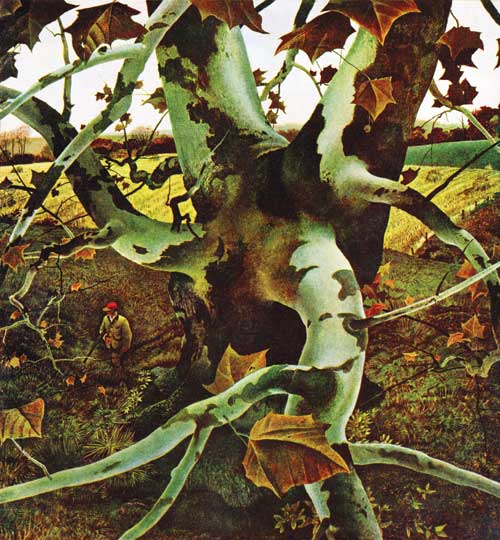
Andrew Wyeth
The Saturday Evening Post
October 16, 1943
The Wyeth Family
Pyle accepted only the most promising students. One of his most well-known was N.C. Wyeth, who enrolled in 1902 and who shared Pyle’s fascination with the landscape and history of America. Wyeth soon became a celebrity in his own right, painting several of the greatest early covers for the Post and, later, for The Country Gentleman. His work is known for its vibrant color and frequent high drama.

N.C. Wyeth
The Country Gentleman
June 1, 1944
N.C. Wyeth’s son Andrew, too, was inspired by the realism of the Brandywine School. But unlike his father, Andrew was a reserved and subtle artist who restricted himself to a limited color palette. Although he frequently painted landscapes like the one below, he described himself as an abstractionist.
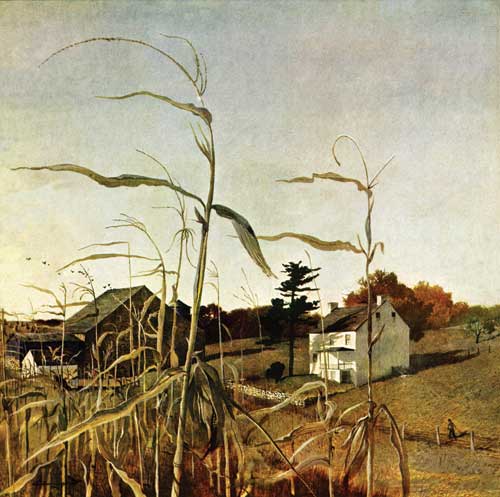
Andrew Wyeth
The Country Gentleman
October 1, 1950
A Woman’s Place
In Pyle’s time, a career as an artist was not generally considered suitable for women. In a bold challenge to the art establishment, Pyle admitted as many women as men to his school. Several of his alumnae would become quite successful, including Sarah Stilwell-Weber and Katherine R. Wireman, both of whom contributed regularly to the Post.
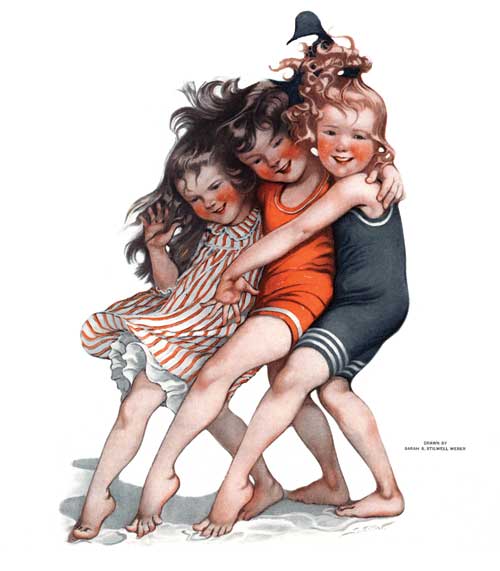
Sarah Stilwel-Weber
The Saturday Evening Post
August 25, 1917

Katherine R. Wireman
The Saturday Evening Post
June 28, 1924
Down to the Sea
Anton Otto Fischer came to Brandywine after serving as a deckhand for three years. Under Pyle, he learned to apply his nautical experience to vivid seascapes like the one below.

Anton Otto Fischer
The Saturday Evening Post
September 20, 1930
Frank E. Schoonover’s early work was influenced by Pyle’s paintings of knights and pirates, but he soon developed his own style. He is remembered today for scenes of action and romance, frequently set in the wilderness.
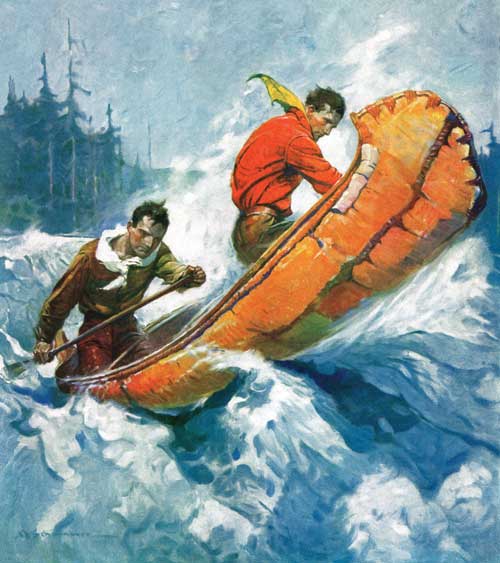
Frank E. Schoonover
The Country Gentleman
March 1, 1930
Classic Covers: A Hint of Spring
We are over it! We’re through with snow and slush, and we’re seeking hints of spring from our finest cover artists: Rockwell, Leyendecker, Dohanos, Falter, Clymer, and more.
Shoveling Floral Shop Sidewalk
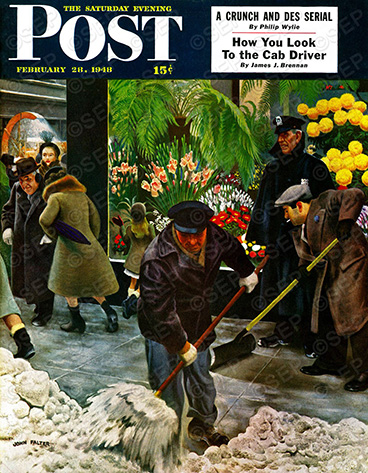
Shoveling Floral Shop Sidewalk
John Falter
February 28, 1948
“It was cold in New York,” Post editors say of this John Falter (1910-1982) cover, “and the cagey artist did most of his investigating behind glass, riding up and down on a Madison Avenue bus.” Painting the scene, Falter figured the frozen-faced workers would get an ironic chuckle from the fact that inside the flower shop window it is spring. Or perhaps not. Editors also had to note that Falter delivered his picture to the Post “just before the first of the winter’s oversize snowstorms hit New York. Then the artist hauled out for Arizona, where you may enjoy scenes like this in comfort.”
Springtime, 1935 Boy with Bunny

Springtime, 1935 Boy with Bunny
Norman Rockwell
April 27, 1935
“You can’t buy a straw hat and make it look old by rubbing dirt in it,” Norman Rockwell (1894-1978) wrote in My Adventures as an Illustrator. “A hat has to be worn in the sun and sweated in and sat on and rained on. Then it’ll be old. And look it.” In 1935 Rockwell was asked to illustrate Mark Twain’s The Adventures of Tom Sawyer and The Adventures of Huckleberry Finn, and he took the costuming very seriously. Desperately needing the right hat for Huck, he found just the thing in, appropriately, Hannibal, Missouri, Twain’s hometown. He spotted “a man walking along the road wearing a straw hat in a beautiful state of decay” and managed to buy it from him. Before long he ended up with a carload of clothes, “all old and rotten, battered, tattered, and splotched.”
Folks around Hannibal no doubt talked for a long time about that crazy guy who paid good money for their old duds, but the book illustrations were done to everyone’s satisfaction. And, like the boy greeting spring (left) with his worn hat and raggedy pants, some Post covers reflected the “Huck Finn look.”
Reading Among the Blossoms
F. Sands Brunner
Country Gentleman
May 1, 1936
Despite the fact that F. Sands Brunner (1886-1954) was very much a rugged outdoorsman who enjoyed camping, canoeing, and mountain climbing, most of his paintings reflect domesticity with adorable children and lovely women. This 1936 work from Post sister publication Country Gentleman is a case in point. The rich color and skillful use of lighting are typical of Brunner’s work. The Boyertown, Pennsylvania, native painted three Country Gentleman and two Post covers.
Appalachian Rhododendrons
John Clymer
May 27, 1961
Nature took over on a grand scale in most of John Clymer’s (1907-1989) 80 Post covers, and people were secondary. In fact, the viewer almost has to squint to see the family consisting of Dad with baby on his back, Mom in straw hat, and daughter leading them along the trail to Craggy Pinnacle near Asheville, North Carolina. Clymer told Post editors, “Sections of the trail wind through 10-foot-high rhododendrons, and the ground is carpeted with the rich pink petals of the flowers that have fallen.”
“These floriferous slopes look their best in mid-June,” editors noted in 1961, “as they did when the Catawba and the Cherokee held sway in the Carolinas. But if the scenery of the area has not changed much, the people have. What self-respecting Indian brave would have toted a papoose on his back?”
Hardware Store at Springtime
Stevan Dohanos
March 16, 1946
Artist Stevan Dohanos (1907-1994) loved hardware stores, and editors informed us that “the store he has painted affectionately for this week’s cover is a composite of many where Dohanos himself has obeyed the impulse, very strong in the spring, to buy a lot of new garden tools.” They warned, however, “this equipment buying is by all odds the most popular phase of gardening, for on a bland spring day there is nothing like the feel of a good rake or hoe in your hand—in the hardware store.”
Ready to Garden
J.C. Leyendecker
May 6, 1916
This gentleman has made his trip to the hardware store and is hauling those spring purchases, lawn mower and all, back by public transportation. Perhaps more surprising is that the illustration is by the great J.C. Leyendecker, the man responsible for those chiseled Arrow Collar men who “haunted several generations of less fortunate-mankind,” according to David Rowland in a 1973 issue of the Post. In Leyendecker’s 40-plus years with The Saturday Evening Post, he showed amazing versatility as an illustrator, depicting subjects varying from elegant to comical in more than 300 covers.
Classic Covers: Women Artists
Let’s face it: The venerable old Saturday Evening Post was never in the forefront of the fight for female equality. Yet, as far back as 1904, some of our finest cover artists were women. This week we share the art of three of these fine illustrators.
Sarah Stilwell-Weber
Swing Up High
Sarah Stilwell-Weber
May 20, 1911
From 1904 to 1921, Sarah Stilwell-Webber (1878-1939) created 60 Saturday Evening Post covers, mostly of women and children. Her paintings of lavishly attired women tended toward the exotic and imaginative, like the lady with the leopard below. Her depictions of children, such as this 1911 cover, delightfully conveyed what fun it is to be a child. These depictions are perhaps why she was also a well-known children’s book illustrator.
Stilwell-Weber studied under the preeminent art instructor of the period, Howard Pyle. In addition to the Post, she illustrated for Country Gentleman, Collier’s, and Harper’s Bazaar. Stilwell-Weber remains a prominent name from the Golden Age of American illustration (1880s-1920s), when American periodicals were rich in artwork that could be mass-produced for the first time.
GALLERY:
Katharine Richardson Wireman
Japanese Lantern
Katharine R. Wireman
June 28, 1924
Lighting a party lantern for the 1924 Fourth of July celebration provides artist Katharine R. Wireman (1878-1966) an opportunity to work with soft light and shadows. Stilwell-Weber’s contemporary, Wireman created the first of her four Post covers in 1906. (Wiremen also painted 22 covers for sister publication, Country Gentleman.) Her works (below) emphasized carefree moments, and she often depicted her characters with rosy cheeks and joyful dispositions.
Wireman studied at the Drexel Institute under Howard Pyle in 1899. She then moved to Germantown, Pennsylvania, where she and a group of close-knit female artists, including Stilwell-Weber, began their illustration careers.
GALLERY:
Neysa McMein
Evening Gown
Neysa McMein
May 21, 1938
By the Roaring ’20s, artist Neysa McMein (1890-1949) was very much a celebrity, mentioned or quoted in magazine articles, fiction, and in advertisements with some regularity. (A 1928 Post article on renowned violinist Jascha Heifetz tells how the musician and his entourage, stuck in a town where nothing for evening entertainment was open, made their way to Heifetz’s room, where he cleared the bed for a dice game and a cheerful shout came from Neysa McMein “whom one does meet in the oddest places,” according to the story.)
McMein was known to entertain other celebrities of the time, such as Irving Berlin, Richard Rodgers, and Dorothy Parker, note Walt and Roger Reed in The Illustrator in America 1880-1980. She lived in an apartment atop Carnegie Hall, writes drama critic David Finkle in an intriguing 2009 Huffington Post article, and she “was known for throwing open her digs to the rich or not-that-rich and famous.
“Furthermore, McMein had a reputation for being a libertine—or, at the very least, a very liberated lady,” writes Finkle. “…There’s an inherent irony here, too. In contrast with her free-spirit life, McMein’s women were the embodiment of innocence [as we see below in a few of her 62 Post covers]. … McMein was defining the American woman for McCall’s, The Saturday Evening Post, and other publications at the same time as chipping away at the image in her daily affairs.”
GALLERY:
Classic Covers: Rural Life
Farming is not just about hard work. The acclaimed artists of The Saturday Evening Post and sister publication Country Gentleman draw the tender, happy moments of life on the farm.
Father and Time
Father and Time
W.C. Griffith
Country Gentleman
March 1, 1946
No real farmer sees a clock at this advanced hour. Editors of Country Gentleman, from the same publisher as the Post, said of this 1946 painting, “Griffith may have been thinking of his own design for living when he painted this nine-o’clock farmer.” Echoed the artist: “I am originally from Nashville, Tennessee, and was brought up under the quaint old Southern theory that nothing is quite as important as a man’s politics, hot buttermilk biscuits, and plenty of sleep.”
This cover is one of seven Griffith did for Country Gentleman and the weather-hardened farmer with a soft spot for animals is reminiscent of Rockwell’s beloved Farmer and the Bird (below).
Farmer and the Bird
Farmer and the Bird
Norman Rockwell
August 18, 1923
Norman Rockwell (1894-1978) was a New York City slicker who loved depicting the ideal rural life. Notable among his country scenes were the 15 covers of Cousin Reginald, a city boy visiting his country cousins, that the artist did for our sister publication, Country Gentleman.
The contrast between the ruggedness of the farmer and his gentleness with the fledgling make this 1923 cover an endearing work. “If you are interested in the characters that you draw,” Rockwell said, “and understand them and love them, why, the person who sees your picture is bound to feel the same way.”
Basket of Kittens in the Barn
Basket of Kittens in the Barn
Reginald Bolles
Country Gentleman
April 12, 1924
This 1924 cover of a farmer’s predicament was typical of the lighthearted themes depicted by artist Reginald Bolles (1877-1967). This was one of four Country Gentleman covers by the Cape Cod native who also did one Saturday Evening Post cover. In addition to book illustrations, Bolles also illustrated covers for Modern Priscilla (1887-1930), a women’s publication.
Snowy Farm Scene
Snowy Farm Scene
Charlotte Joan Sternberg
Country Gentleman
December 1943
Far-flung relatives begin gathering for the holidays in this cheerful 1953 cover by Charlotte Joan Sternberg (1920-2003). Charming scenes of the New England countryside were a common theme for this Connecticut-born artist, but this farm was really close to home.
Her neighbor, dairyman Clayton Robert Hall, whose family had farmed the 140 acres near Meriden since the early 1800s, guided the artist through the farm, which she began to paint the previous summer when the surrounding landscape was still green. The photo below shows the artist and farmer, along with a couple of disinterested cows, consulting on the illustration destined to become a magazine cover.
Miss Sternberg and Mr. Hall photo
Country Gentleman
December 1953
Best known for her Americana landscapes, many of which can be viewed at The Art of Charlotte Joan Sternberg website; she was a successful commercial artist and painted portraits, including one of President Dwight D. Eisenhower.
Classic Art: The Many Faces of Winter
Post artists portrayed winter’s transformation with meandering paths, trudging footsteps, and rolling hills.
Winter Wonderland
Winter Wonderland
Walter Baum
Country Gentleman
January 1, 1937
Of winter’s lifeless world each tree now seems a perfect part;
Yet each one holds summer’s secret deep down within its heart.
—Charles G. Slater
This scene with its impressionistic, stark, winter trees is an inside illustration from Country Gentleman, a sister magazine of The Saturday Evening Post. The artist, Walter Emerson Baum (1884-1956), was born in Sellersville, Pennsylvania, and painted many landscapes of his home state. He is particularly known for his rugged work ethic; he frequently painted outdoors, even as winter storms raged.
Baum, in addition to illustrating and producing fine art, was an art teacher in Allentown, Pennsylvania, from 1926 to 1956. He was also a writer, a columnist for the Sellersville Herald and eventually he became the paper’s editor. He wrote the book Two Hundred Years, a history of the Pennsylvania Germans in his hometown.
Tumble from Sled
Tumble from Sled
Dominice Cammerota
January 27, 1940
This Dominice Cammerota illustration shows the fun side of winter. The artist painted two more Post covers, also of women enjoying seasonal pastimes: a summer sunbather reading the paper on her rooftop (August 3, 1940) and a springtime gardener in a wheelbarrow (May 10, 1941). If only there was a fall cover to complete the set.
Interestingly in this issue, which went to press while Gone With the Wind was captivating Americans in the theater, an editorial offered up the fate of a fraudulent manuscript purportedly written by Margaret Mitchell, whose book the movie was based on. The editorial included the first paragraph of the 50-page manuscript, noted that the editor had contacted the real Margaret Mitchell, and advised readers: “We’re holding the manuscript,” then asked, “Would the author like to collect it?” Not surprisingly, there were no takers.
No School Today
No School Today
Angus MacDonall
Country Gentleman
January 27, 1923
We don’t know how far this young man trudged through the snow to get to school, but it was all for naught. The sign on the door says it all. This 1923 cover was typical of the humorous, homespun style of Angus MacDonall (1876-1927) who did 21 covers for sister magazines, The Saturday Evening Post and Country Gentleman. He was a cartoonist and illustrator for Life for many years and contributed artwork to other publications such as Harper’s and Ladies’ Home Journal.
MacDonall came from St. Louis but eventually moved to the seaside town of Westport, Connecticut, where he helped establish it as an art colony. Among its list of famous residents throughout the 20th century are Post artist Stevan Dohanos, American author F. Scott Fitgerald, and actor Paul Newman.
Herding in Winter Storm
Herding in Winter Storm
Matt Clark
Country Gentleman
March 1, 1944
Matt Clark (1903-1972) and his brother Benton, also an illustrator of Western art, came from a Coshocton, Ohio, family whose lives revolved around horses. Both artists were inducted into the Society of Illustrators Hall of Fame in 2008. The society, in describing the brothers’ similar styles, summed up this 1944 cover aptly: “Not reliant on close-ups or facial expression to express the emotions of the characters, they used the attitudes or the actions of whole figures to describe their relationships. That also included the settings—letting the landscape play a role.”
The Clark brothers did more than 100 illustrations for fiction in The Saturday Evening Post, and Matt Clark created six Western or rural-themed covers for Country Gentleman magazine.
Snow on the Farm
Snow on the Farm
John Clymer
December 22, 1956
“My approach was to look for human interest subjects and then try to place them in a proper setting to fit the idea,” illustrator John Clymer (1907-1989) said. The children (along with cat and dog) playing in the snow in this 1956 cover are all but overwhelmed by the beautiful landscape. Clymer could say what he liked about his human subjects, but his landscapes always dominated the 80 covers the artist did for the Post.
Painting covers for The Saturday Evening Post was a career highlight for any illustrator, but they often learned the hard way about accuracy, as Clymer told art historian Walt Reed in John Clymer, an Artist’s Rendezvous with the Frontier West: “There was only one drawback about doing covers for the Post. They went everywhere in the country, and because I picked and painted actual places, there would be several hundred people who lived nearby who’d scrutinize every detail to try to find something wrong. There would always be someone like a telephone lineman who’d write in and say, ‘I don’t think that was the kind of insulator they used in that area.’” But only once did Clymer have to correct a cover he submitted: “I sent in a picture that had an automobile in the foreground. I had completed everything, lights, chrome, trim, spokes, but forgot to paint the door handle.”
Classic Art: (Nearly) Forgotten Christmas Art
Beautiful art deserves to be remembered and enjoyed. We’ve found Christmas illustrations from Country Gentleman and Ladies’ Home Journal magazines, which were sister publications of the Post for many years.
Romantic Skate
Romantic Skate
Manning de Villeneuve Lee
December 1, 1937
While searching the archives for holiday covers, we’ve come across many joyful Santas, bustling shoppers, and even post-holiday scenes. So, it’s not often that we find a romantic Christmas cover in the bunch, but this 1937 illustration by Manning de Villeneuve Lee (1894-1980) fills the bill admirably.
At the time this sentimental cover was created, the artist and his wife (Eunice Celeste Sandoval) had been married for 25 years. Together they created children’s books; Manning Lee did the illustration and his wife wrote them (under the pen name Tina Lee). They also created artwork for Jack and Jill, a children’s magazine from the same publisher as The Saturday Evening Post and Country Gentleman magazines.
Main Street at Christmas
Main Street at Christmas
Peter Helck
December 1, 1944
From the 1920s through the 1940s, Helck was a successful magazine illustrator and advertising artist, writes Timothy Helck, a grandson of the artist, who maintains a website dedicated to his grandfather. The website shows examples of Peter Helck’s work, including complex industrial scenes for National Steel and beautifully executed automotive paintings done for Esquire magazine in 1944.
Helck created two other covers for Country Gentleman; both, appropriately designed for the rural American magazine, were farm scenes. He did 20 illustrations for The Saturday Evening Post, and many of these were for fictional stories on auto racing. Helck, who grew up in the late 1890s and had followed auto racing since its infancy, authored and co-wrote several books and numerous articles on the subject. Some are still available today, including 1961’s The Checkered Flag and Great Auto Races and Grand Prizes from 1976. The Grand Prix History website gives an interesting overview of Helck’s lifelong involvement with the sport.
Drum for Tommy
Drum for Tommy
Norman Rockwell
December 17, 1921
Norman Rockwell did 35 Country Gentleman covers between 1917 and 1922. One reason he stopped in 1922 was the high demand for his work, a heady situation for an artist only in his mid-20s. In addition to The Saturday Evening Post covers (between 6 and 18 per year during the 1920s) and inside illustrations for Ladies’ Home Journal, Rockwell had a growing stable of advertising clients, including Interwoven Socks, Jell-O, and Edison Mazda Lamps, among several others. In the 1920s, he also began illustrating calendars for Boy Scouts of America, the beginning of a 50-year relationship with that organization.
Although his Santa covers for The Saturday Evening Post (which started the year after this 1921 cover) became classics, this jolly old elf is less well known. It is the only Country Gentleman Rockwell Santa.
Baby’s First Christmas
Baby’s First Christmas
Haddon Sundblom
December 1, 1929
Artist Haddon Sundblom (1899-1976), who was born in Michigan to a Swedish family, was best known for the classic Santa Claus he painted for Coca-Cola ads from the 1930s through the 1960s, he was also well recognized for pin-up art in calendars. In fact, his last assignment was a Playboy cover in 1972.
Because of the popularity of his later work, it is easy to forget Sundblom did anything in his pre-Coca-Cola days. But his earlier work, like this 1929 Country Gentleman cover, “Baby’s First Christmas,” should be remembered for its impressionistic style. His technique was inspired by, among others, artists Howard Pyle and John Singer Sargent, and is described on Leif Peng’s blog as “first stroke,” using the fewest strokes possible to depict a subject. Peng shows several beautiful examples of Sundblom’s paintings using this technique.
Simeon and the Christ Child
Simeon and the Christ Child
Marion Boyd Allen
December 1921
In the Gospel of Luke, God promised Simeon, a righteous and devout man, that before his death, he would see the Christ child. Simeon took the child into his arms and blessed him. From Rembrandt to children’s illustrators, the biblical scene of Simeon and the Christ child has had many manifestations. We recently discovered this image in our archives from the December 1921 Ladies’ Home Journal.
This beautiful rendition of Simeon is by Marion Boyd Allen (1862-1941). Also well established as a portrait painter, Allen preferred the vertical format to horizontal, even for nature scenes. The website McDougall Fine Arts shares an intriguing story about Allen’s landscape painting.
Classic Covers: Halloween
Jack-o’-lanterns, masks, and merriment—in the early 1900s, the ghoulish holiday wasn’t so different than it is today.
Teddy the Pumpkin
Teddy the Pumpkin
J.C. Leyendecker
October 26, 1912
Theodore Roosevelt was the U.S. president from 1901-1909. Yet in 1912, when this J.C. Leyendecker cover (left) appeared, Roosevelt was still a force of nature. That same year, he had a falling out with former good friend and then-President William Howard Taft and decided to challenge him in the upcoming election. The Republican bigwigs favored Taft though people like this youngster said “Bully!” for Roosevelt.
Halloween, 1904
Halloween, 1904
Anne Estelle Rice
October 29, 1904
In the 1930s, Anne Estelle Rice (1877-1959) left illustration and began a career designing operatic sets and costumes in London. But her passion for theater was showcased in her illustrations, such as the 1904 cover (left). Rice often drew figures in theatrical costumes and settings. This cover is one of three she did for the Post; the contour lines and simple details shown in the uncomplicated silhouette are definitive of her style.
Woman in Masquerade Costume
Woman in Masquerade Costume
C. Allan Gilbert
October 12, 1907
An invalid as a child, Charles Allan Gilbert (1873-1929) drew pictures to entertain himself. He officially took up the study of art at age 16, and at 21 he studied for a year at the Académie Julian in Paris, where greats such as J.C. Leyendecker were trained.
Gilbert chose beautiful, buxom women as subjects, much like his contemporaries: Charles Dana Gibson and Howard Chandler Christy. Besides four covers for the Post, Gilbert illustrated books, posters, and calendars, but his work is often overlooked for the one image he is best remembered for: The intriguing 1892 double image called All is Vanity.
Looking for Future Husband
Looking for Future Husband
F. Lowenheim
October 28, 1922
Country Gentleman
German-born Frederick Lowenheim (1870–1929) was a storybook illustrator in the early 1900s. Like his book illustrations, Lowenheim’s 15 covers for Country Gentleman were often scenes depicting children in amusing situations, such as the Halloween prank on the October 28, 1922, cover (left).
A poem from an early 1900s postcard explains the girl’s horrified expression: “On Hallowe’en look in the glass, Your future husband’s face will pass.”
Halloween Fiddler
Halloween Fiddler
Norman Rockwell
Country Gentleman, October 22, 1921
Norman Rockwell painted 35 covers for Country Gentleman, which like The Saturday Evening Post, was published by Curtis Publishing Company. Known as “a journal for the farm, the garden, and the fireside,” Country Gentleman‘s content included farm news, gardening and canning advice, and fiction.
Most of Rockwell’s covers for the farm centric magazine centered around a character he created: city-slicker Reginald, who visits his country cousins frequently, only to be made the butt of their jokes.
In the 1921 Halloween cover (left), however, Rockwell shows us a more peaceable side to country living.
Classic Cover: The Craziest 4th of July
The craziest 4th of July? Why, that had to be 1914 in Tinkham’s Corners. I really feel for the pig.
The kids will have fun with this one! We have a magnifying glass below to view this unique cover from The Country Gentleman magazine in 1914, a sister publication of The Saturday Evening Post‘s for many years.
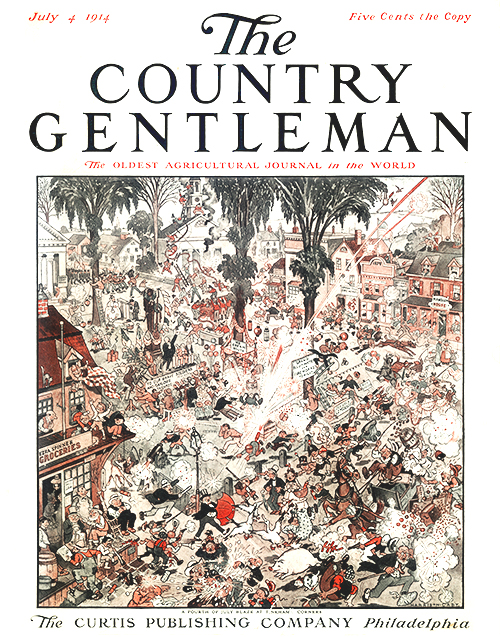
Harrison Cady was a comic strip artist who had an extremely long career. For more than 70 years he illustrated for The Country Gentleman, the Post, and Ladies Home Journal, among other magazines.
Cady created several covers with wacky doings in minute detail. Where’s Waldo, indeed! In this one, a large box of fireworks (just below the center of the scene) has exploded in Tinkham’s Corners. Horses are spooked, people are fleeing, and guns are going off accidentally in the midst of the mayhem. Just below and to the left of the exploding box is a gentleman whose rifle is discharging, taking out a streetlight. (Back then, some people fired rifles into the air to make a celebratory noise, which is why some of these lunatics are running around with them.) Up and to the left of him is a little rapscallion setting off the town’s Revolutionary War cannon. There are rotten kids in Tinkham’s Corners.
View the larger version of the cover below and see if you can find the following:
1) The pig with the firecrackers tied to its tail;
2) The no-good kids vandalizing the sign: “To Our Brave Soldiers and Sailors” (changing it to read ”Scolders and Failures”) (I told you there were rotten kids in Tinkham’s Corners);
3) The marching band;
4) The cat with it’s hackles up (hint: a rooftop);
5) The man getting squashed by a runaway horse and carriage;
6) The woman in the polka dot dress landing on her behind;
7) The man with a basket of eggs that are getting smashed;
8) The “Hop Sing Laundry”;
9) The most remarkable citizen of Tinkham’s Corners—the napping man!
We hope you have a fun, safe, and exciting 4th of July—just not this exciting!
Classic Covers: The Delightful Art of William Meade Prince
We don’t know a great deal about this artist, but he did forty-eight charming covers for our sister publication, Country Gentleman, and we know enough to enjoy them!
Grandma Bobs Her Hair by Wm. Meade Prince

Wm. Meade Prince
The Country GentlemanMay 9, 1925
I adore this cover! In 1925 bobbing your hair was a bit daring and grandma has decided to get with it. We can only imagine grandpa’s comments. Artist William Meade Prince (1893-1951) grew up in Chapel Hill, North Carolina.
Dog Doesn’t Like Sax Sounds by Wm. Meade Prince

Wm. Meade Prince
The Country Gentleman
March 28, 1925
Everybody’s a critic. This cute cover is also from 1925. Artist Prince had a hard time choosing between West Point Military Academy or a study of architecture at Georgia Institute of Technology. As a sort of compromise, he settled on studying art at the New York School of Fine and Applied Arts – luckily for us!
Thanksgiving Pie by Wm. Meade Prince
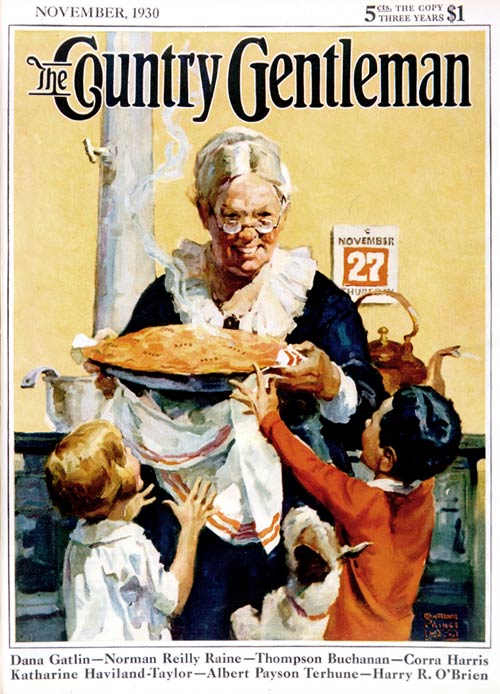
Wm. Meade Prince
The Country Gentleman
November 1, 1930
Here’s a timely cover. It’s Thanksgiving and everybody wants some of that delicious-smelling pie! Meade had a way with colors. After years of advertising work in Chicago, Prince moved to Westport, Connecticut where he could work on magazine illustration and ride and maintain fine Arabian horses.
Playing Pirate by Wm. Meade Prince
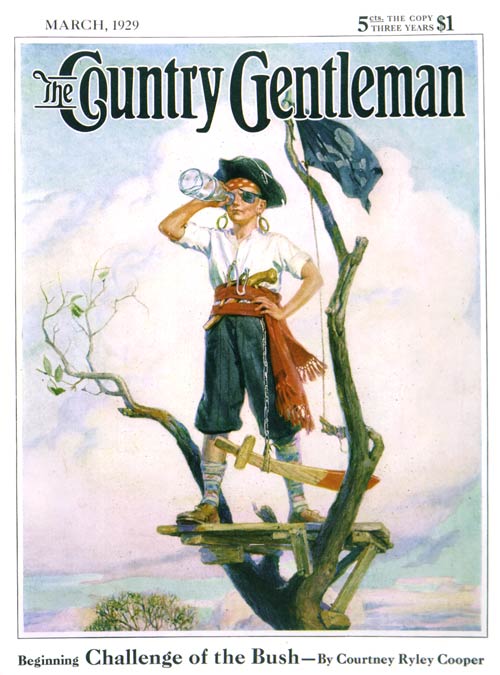
Wm. Meade Prince
The Country Gentleman
March 1, 1929
Prince depicted kids and grandparents with equal skill. Often the backgrounds in his paintings are important. For example, the billowing white clouds behind our youngster give us a sense of dreaming big. When Westport eventually became too urban for riding, Prince returned to Chapel Hill, North Carolina, where he built his own studio and stables to continue his work in illustration and care for his horses.
Grandpa Sleeps, Girl Sings in Church by Wm. Meade Prince

Wm. Meade Prince
The Country Gentleman
April 11 1925
Several Country Gentleman and Saturday Evening Post artists seemed to like the falling asleep in church theme. Often, the wife or child accompanying the snoozer is horrified and embarrassed. This little girl simply sings away while grandpa dozes. It’s another fine example of the skill of this artist in depicting young and old alike.
Something Went Bump in the Night by Wm. Meade Prince

Wm. Meade Prince
The Country Gentleman
October 11, 1924
I love the people in Prince’s drawings. Many a lovely magazine cover of the time was of a pretty girl, but Prince’s people were real. This startled elderly couple who heard something in the night is a fine example. Notwithstanding the harsh, unforgiving look on the man’s face, there is an element of humor here. You may need to click on the cover for a close-up, but could the source of the ruckus be the tiny mouse on the table?
Classic Covers: A Dog Is a Girl’s Best Friend
We’ve seen many Post covers with a man and his beloved hunting dog, or a boy and his furry best buddy. And from Wolfhounds to tiny laptops, Saturday Evening Post artists showed us how a dog, not diamonds, is a girl’s best friend.
Woman and Wolfhound by W.H. Coffin

W.H. Coffin
October 17, 1925
This is no lap dog. The wolfhound and pretty lady were painted by artist W.H. Coffin. Born in Charleston, South Carolina in 1878, Coffin did over thirty Post covers between 1913 and 1931, each one of an attractive woman. His portraits were sometimes stark, but as he progressed he added props for contrast and interest: a spray of flowers, a feathered fan, a dog big enough to rip your throat out…okay, just kidding about the last part. He’s a beautiful animal.
Lady with Riding Crop and Dog by Harrison Fisher

Harrison Fisher
August 28, 1909
Clearly, in the early twentieth century, charming ladies were a popular cover subject for Saturday Evening Post artists. Harrison Fisher did an amazing eighty-eight covers, frequently of ladies in fabulous hats. This one is from 1909. I can’t decide: is the hat or the dog cuter?
Tipping the Scales by Joseph Farrelly
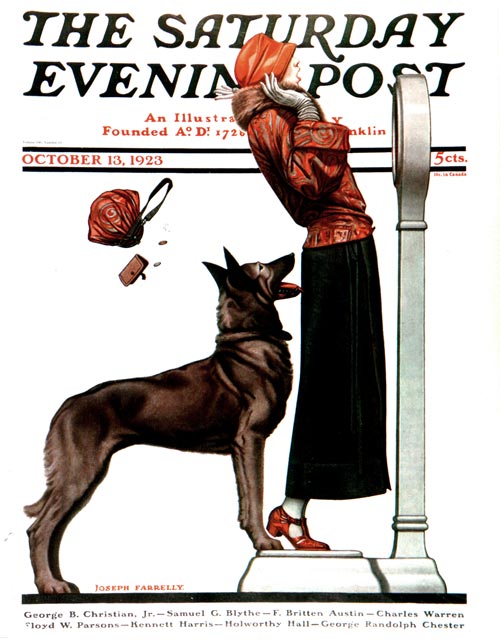
Joseph Farrelly
October 13, 1923
Okay, so a dog isn’t always a woman’s best friend! Next time, she’ll learn to get a smaller dog. This cute cover from 1923 is the only one we have by this artist, but at least one Post staffer thinks it would make a great framed print for the bathroom. One needs humor by the bathroom scales.
Woman Resting After the Shoot by Edward Penfield

Edward Penfield
The Country Gentleman
December 15, 1917
Where there was a hunting cover, and there were many, there was a dog. And sometimes the hunter was female. This lovely autumn cover from a 1917 Country Gentleman magazine (a sister publication) was by artist Edward Penfield. His Country Gent and Post covers at the turn of the century were of varied subjects: horses and horseless carriages, Presidents Teddy Roosevelt and Grover Cleveland…and the occasional pretty lady.
Girl Scout by J.C. Leyendecker

J.C. Leyendecker
October 25, 1924
The girl scouts started out in 1912 with eighteen members in Savannah, Georgia and today boasts over three million members. It was enough of an entity by 1924 to capture the attention of renowned Post cover artist J.C. Leyendecker. This young lady is practicing her first aid skills and her furry friend is being, well, a good scout.
Woman and Small Dog by Clarence Underwood
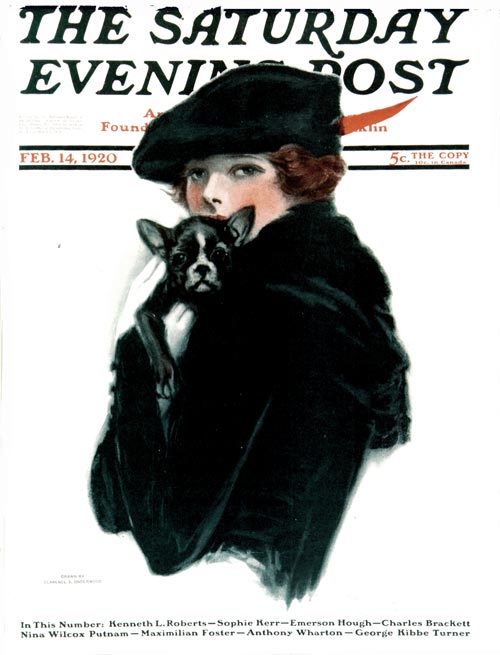
Clarence Underwood
February 14, 1920
Clarence Underwood illustrated Post covers between 1903 and 1926 – over forty in all. This one is a lovely study in black and white, with a small red feather for contrast. And yes, you can get reprints of thousands of beautiful, humorous and interesting Post (and Country Gentleman) covers at www.curtispublishing.com. If you’re looking for a particular cover or want to see a certain cover subject in a future Featured Artists column, contact me at: [email protected].
Classic Covers: That First Nip of Autumn
“Autumn, the year’s last, loveliest smile.” – William Cullen Bryant. These Saturday Evening Post and Country Gentleman covers evoke the first coolness of autumn.
Fall in the Park by Neysa McMein

Neysa McMein
December 3, 1938
You can feel that nip in the air with this cover by artist Neysa McMein (1888-1949) from 1938. McMein created almost 60 Saturday Evening Post covers between 1916 and 1939, all of fashionable women. She is probably best known for creating the image of Betty Crocker for General Mills.
Geese Flying South by William Meade Prince

Wm. Meade Prince
October 1, 1925
We love the colors in this William Meade Prince (1893-1962) cover for The Country Gentleman magazine (a sister publication of the Post). There are many charming or humorous CG covers by Prince, nearly 50 in fact. You can see more of Prince’s work here.
Hunter and Spaniel by J.F. Kernan

J.F. Kernan
November 3, 1928
Many J.F. Kernan (1878-1958) covers depicted a delightful older gent, and this is one of the most beautiful. From 1928, the hunter and his beloved spaniel are framed by the cool beauty of autumn. You may recall the “What Happens Next?” piece a couple of weeks ago that featured Kernan’s Country Gentleman covers of a man making fun of his wife’s choice of political candidate. Kernan illustrated over 50 covers for CG and the Post.
A Walk in the Woods by John Newton Howitt
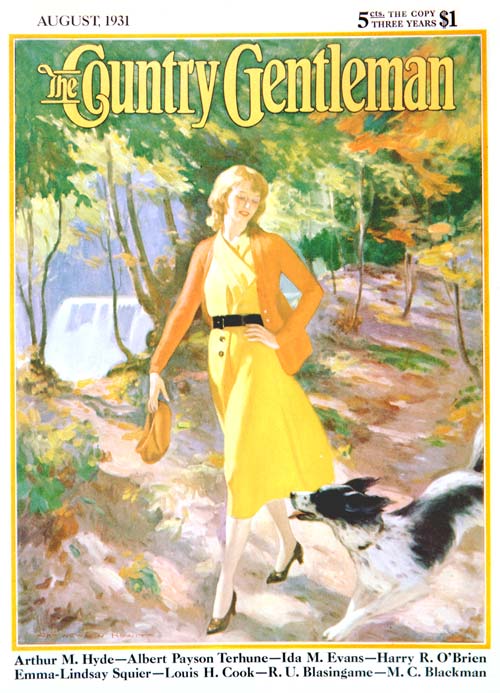
John Newton Hewitt
August 1, 1931
Gazing on this lovely country scene, it is difficult indeed to believe that artist John Newton Howitt (1885-1958) became known as the “Dean of the Weird Menace Cover” for his dime pulp and horror magazine art! We’re delighted to show this side of the fine artist/illustrator.
Pointing to the Pheasant by Paul Bransom

Paul Bransom
November 1, 1937
Paul Bransom (1885-1979) was a young comic-strip artist, but ended up spending most of his time at the Bronx Zoo, sketching the animals. The zookeeper noticed Bransom and allowed him to set up his own private studio in the lion house. Filled with confidence, he met with the editor of The Saturday Evening Post who immediately purchased four covers and several other illustrations. Quite the coup for a young man in his early 20s. This autumn hunting scene is from 1937.
Pumpkin Patch by Sarah Stilwell-Weber
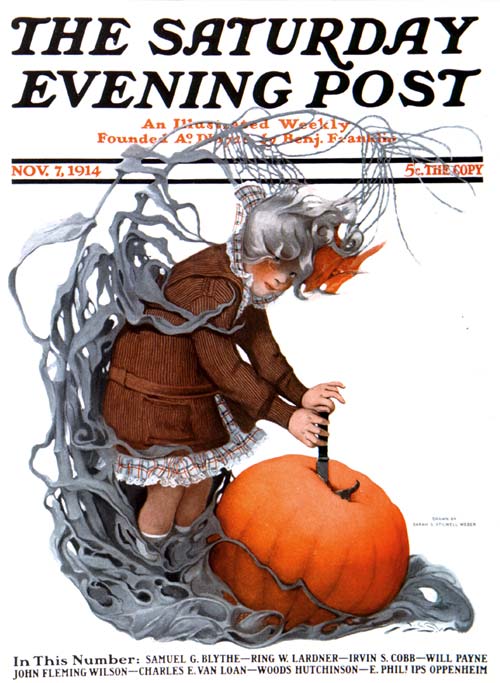
Sarah Stilwell Weber
November 7, 1914
How soon that nip turns to a chill when the wind is blowing. Sarah Stilwell-Weber (1878-1939) depicted many a charming child for The Saturday Evening Post. Picking out just the right pumpkin is a rite of fall, but we think this little lass is going to need assistance here, as it appears her choice weighs more than she does.
Classic Covers: What Happens Next?
He Won’t Win! by J.F. Kernan

J.F. Kernan
The Country Gentleman
October 25, 1924
In 1924 women didn’t know much about politics – at least according to men. It was only four years prior that the 19th Amendment gave American women the right to vote. This homey cover from artist J.F. Kernan probably shows a typical country scene. Hubby is laughing about the wife’s choice of a candidate. This, and the cover below, are a couple of my favorites.
Her Man Won! by J.F. Kernan

J.F. Kernan
The Country Gentleman
November 1, 1924
This is why it’s one of my favorites! The man of the house got his come-uppence. From the look on his face, he doesn’t have a lot more to say. Artist Kernan did many delightful Country Gentleman covers. Look for a future “Featured Artists” piece on those.
Smoking Behind the Barn by Norman Rockwell

Norman Rockwell
The Country Gentleman
May 8, 1920
Norman Rockwell mastered the “What Happens Next?” genre for Country Gentleman. These two country boys are having the time of their lives, sneaking a smoke behind the barn. The dog peeking through the fence is not too sure about this idea.
Retribution by Norman Rockwell
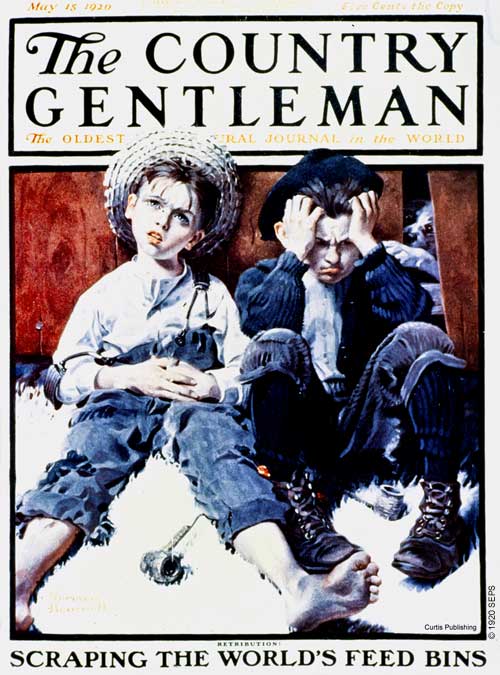
Norman Rockwell
The Country Gentleman
May 15, 1920
This one is called “Retribution”, for obvious reasons. The dog was right – it wasn’t such a good idea. But instead of giving an “I told you so” look, Fido is sweetly sympathetic. The ragged clothes, weathered straw hat and red bandanna are favorite Rockwell props that we see in cover after cover.
Hey, Shrimp! by Norman Rockwell
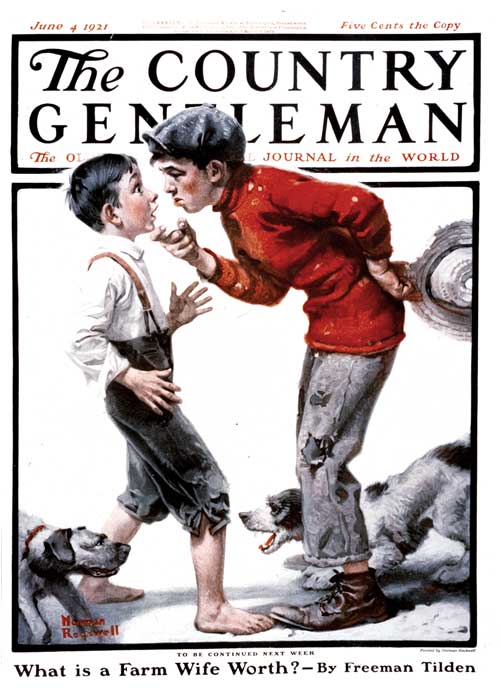
Norman Rockwell
The Country Gentleman
June 4, 1921
Don’t you hate a bully? So did Rockwell. The big kid is picking on the little one, taking his hat off and taunting him. Even the dogs are squaring off. Rockwell didn’t often paint “pretty dogs” like everyone else. He trolled the streets for the right mutt for a painting. It looks like this isn’t going to be pretty scene. But wait…
Take That! by Norman Rockwel
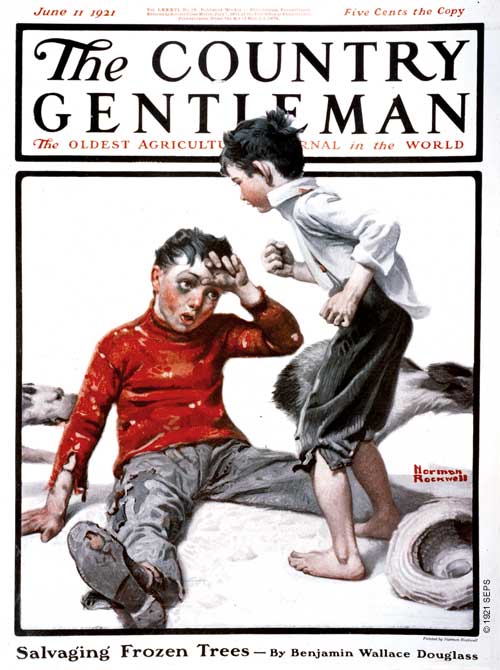
Norman Rockwell
The Country Gentleman
June 11, 1921
The following cover delivers a delightful surprise! The little guy whipped the bully! Thus inspired, the little kid’s dog is routing the bully’s dog. There’s that straw hat again.
The Fishing Trip by Norman Rockwell
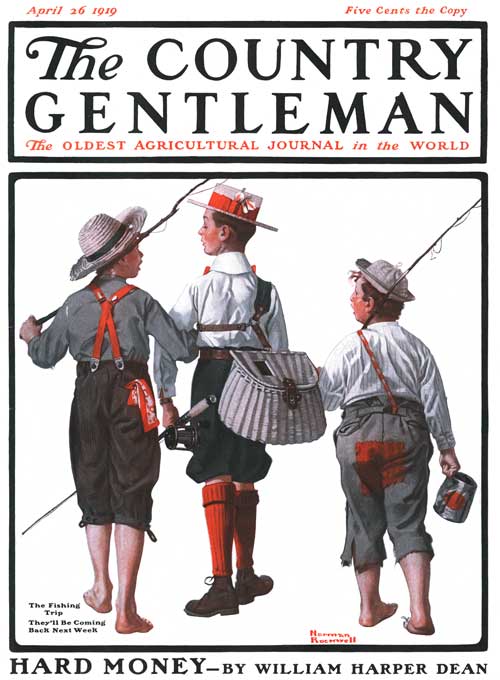
Norman Rockwell
The Country Gentleman
April 26, 1919
We previously did a feature in this space about Rockwell’s Cousin Reginald. If you recall, Reginald was a city slicker who visited his country cousins, and these ornery boys got Reginald in all kind of fixes. This week, the boys are going fishing. Reggie, as usual, doesn’t seem to have any casual clothes. Note how the kid on the left is holding Reggie’s arm as if he’s saying, “Just wait! This’ll be great!” What happened next is no surprise.
The Catch by Norman Rockwell

Norman Rockwell
The Country Gentleman
May 3, 1919
Once again, the country cousins show up the city boy. Reginald can’t catch a break with these guys – or much of a fish, either. We love the way Rockwell showed the “front” and “back” views of the youngsters. A city slicker from New York himself, Rockwell preferred depicting the charm of small-town or country life.

